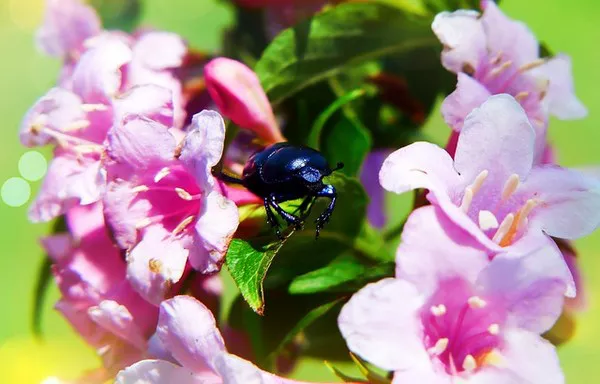In the intricate tapestry of nature, cooperation between species, known as mutualism, is a fundamental thread. This harmonious interaction can be witnessed in various organisms, from plants and fungi exchanging nutrients to the mutually beneficial relationship between pollinator bees and nectar-providing flowers. The world of mutualism is diverse and extends even to the depths of the ocean, where sea anemones offer shelter to clownfish in exchange for excreted nutrients.
Mutualism has long been recognized as a driving force behind the survival and prosperity of many species. However, recent scientific studies have unearthed a fascinating paradox: the presence of helpful partners can sometimes intensify the invasiveness of certain species, such as pine trees with fungi or fig trees with wasps. Conversely, other research suggests that species not reliant on mutualistic partners may exhibit higher levels of invasiveness.
A groundbreaking study conducted at the University of Minnesota, published in the journal Ecology, endeavors to unravel the conditions under which a mutualistic partner can either enhance or hinder a species’ invasiveness. To explore this intricate ecological phenomenon, the research employed mathematical models known as integro-difference equations (IDEs).
IDEs serve as valuable tools for modeling spatial processes and encompass the multifaceted impacts of mutualism on species growth and dispersal. Mathematical modeling is especially beneficial for comprehending complex ecological processes, such as invasions, which unfold over extended periods and prove challenging to study in the field.
The research embarked on investigating a phenomenon termed “mutualism dependence,” which gauges the extent to which a species relies on benefits from its partner for growth. Species exhibiting high dependence are often termed “obligate mutualists,” while those with lower reliance are known as “facultative mutualists.” The aim was to uncover how a species’ invasive potential fluctuates in relation to its mutualism dependence.
The study’s key findings include:
The Impact of Partner Contributions: The extent of a partner’s nutritional or other benefits can determine whether a species becomes more or less invasive, as measured by its range expansion speed.
The Pitfall of Too Many Partners: Excessive mutualistic partners may thwart a species’ invasion, as the costs associated with supporting them become prohibitively high.
Alteration of Spatial Distribution: Mutualistic dependency influences a species’ spatial distribution, influencing whether it is more concentrated at the edges or center of its range.
As invasive species continue to proliferate, this research offers promise in safeguarding native habitats from the encroachment of mutualistic invaders. A deeper comprehension of the mutualistic characteristics of invasive species could guide researchers in identifying strategies to impede their expansion.
Lead author Naven Narayanan Venkatanarayanan elucidates the broader implications of this research, stating, “Understanding the role of mutualisms is critical to preventing ‘invasional meltdowns,’ which is a process by which mutualists accelerate each other’s invasions in a positive feedback loop.” Invasional meltdowns can accelerate the extinction of native species and communities, making this research a pivotal tool in biodiversity conservation efforts. Future applications may encompass the identification and biological control of mutualist partners of invasive species, such as fungi, in a bid to mitigate their ecological impact.


